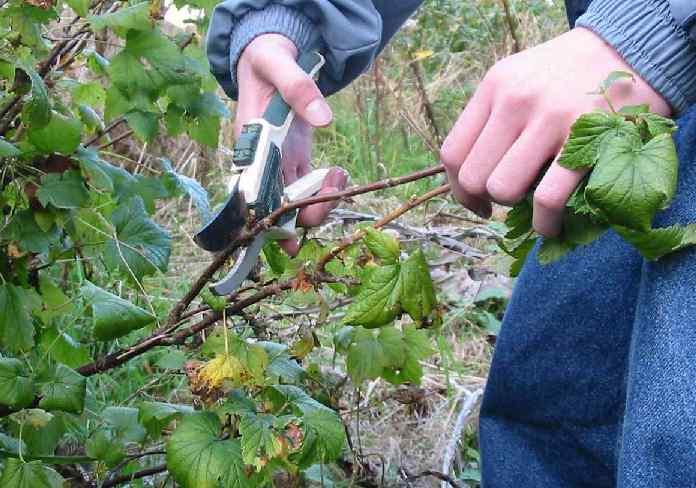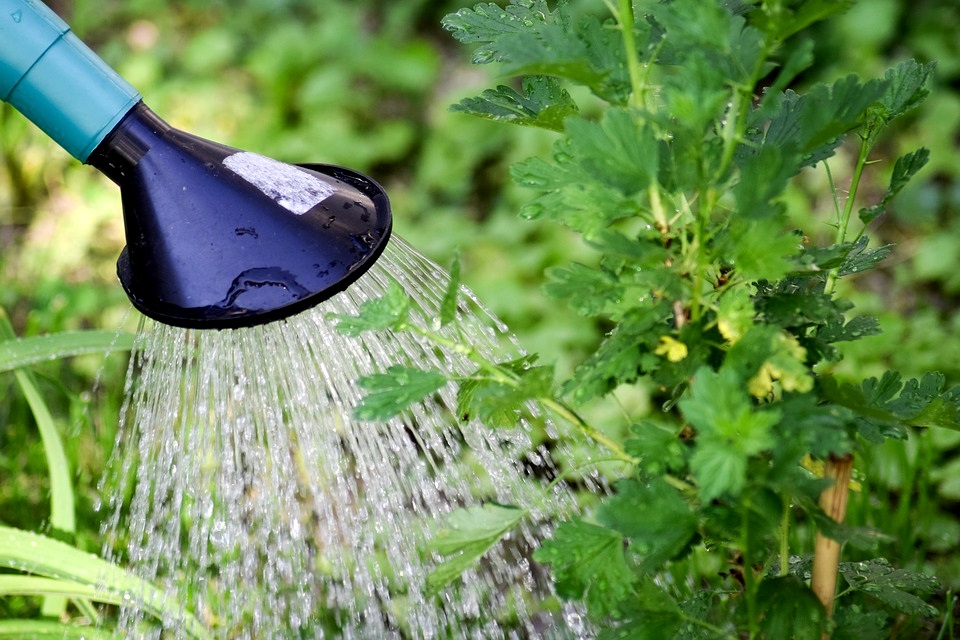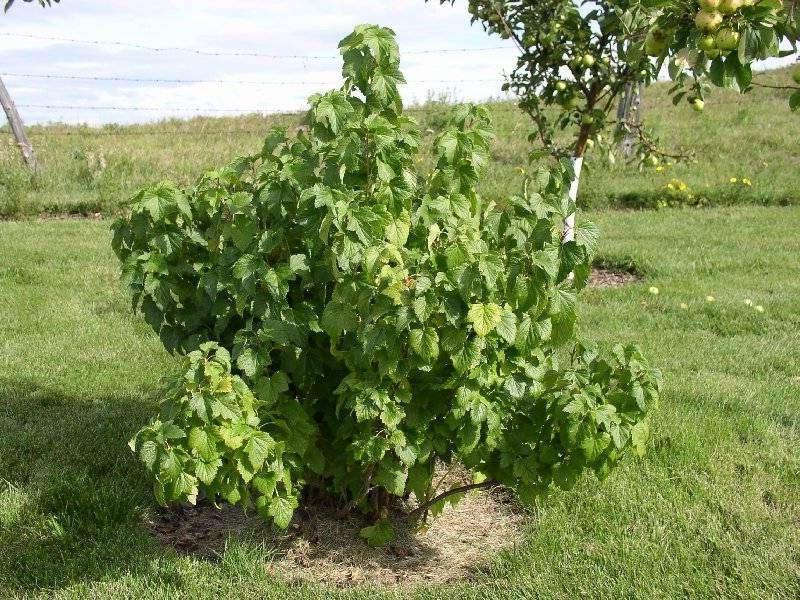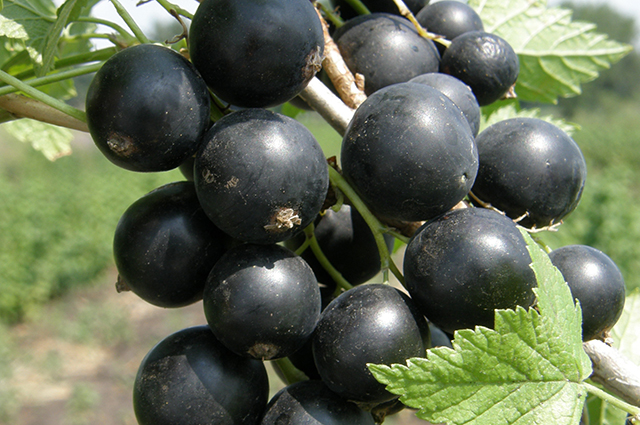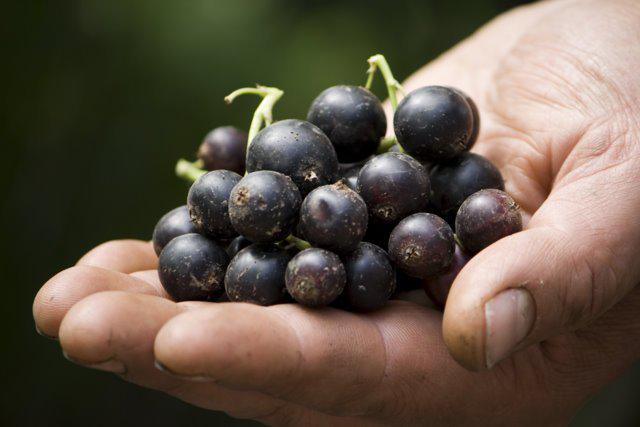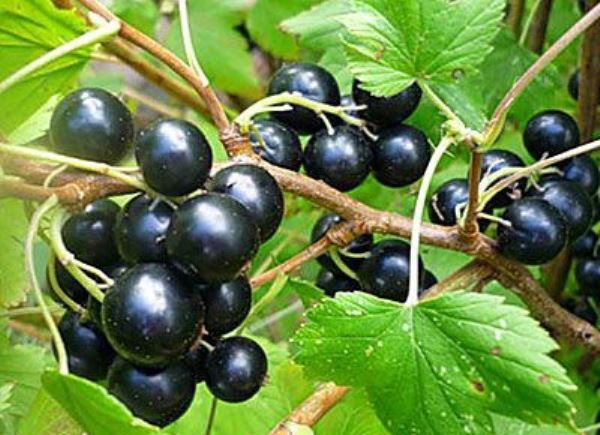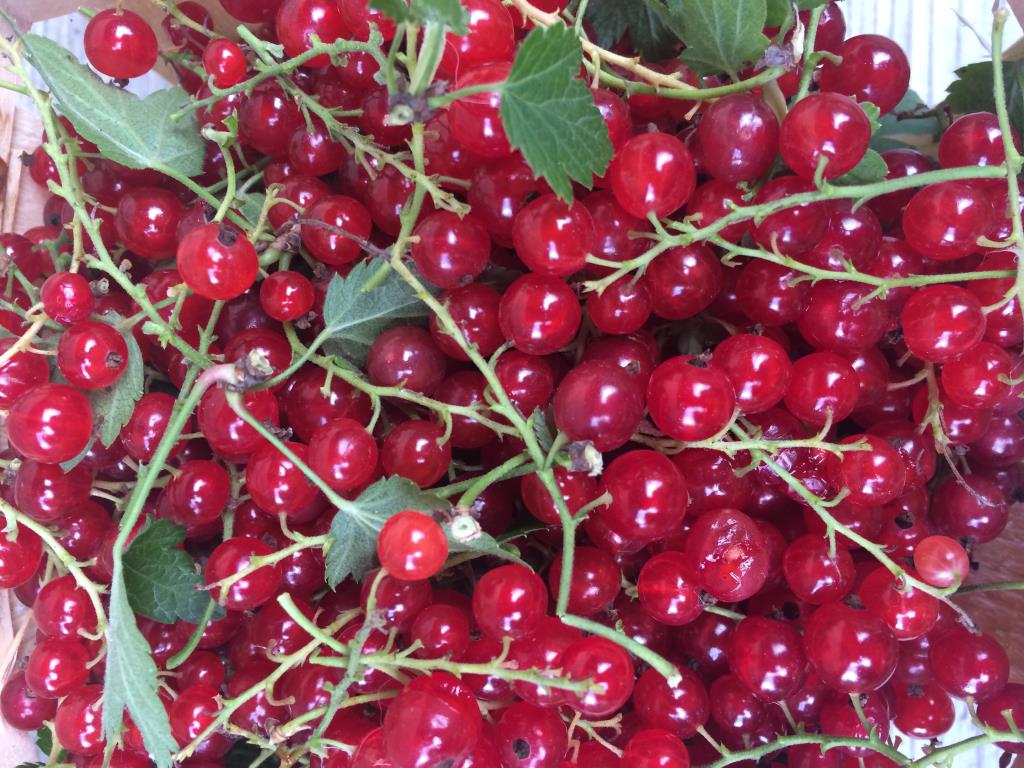Content:
Currant has long become for summer residents and gardeners the same habitual phenomenon as other varieties of varietal crops grown by them. The first mentions of currants can be found in Arabic treatises. She is referred to as ribas. In the XI century, this culture appeared on the household plots of monasteries in Russia. As a medicinal plant, currants began to be cultivated in the XIV century. Five centuries later, it was appreciated for its nutritional and taste qualities.
This unusual dessert occupies a leading position in the content of vitamin A and "ascorbic acid", in comparison with other berries. During the existence of currants, a significant number of varieties have been bred, and the selection continues, but this article will be devoted to one of the modern ones, bred at the end of the last century - the Izyumnaya variety.
The history of the creation of the variety
The main indicators that you need to pay attention to when choosing a variety of currants for a summer residence, a vegetable garden, a personal plot are good quality berries, unpretentiousness, resistance to diseases and pests, ripening times, taste, frost resistance and drought resistance. The considered variety is from early maturing with a universal purpose.
The breeders of the All-Russian Research Institute of Lupine were engaged in breeding the variety. Alexander Ivanovich Astakhov was in charge of the breeding work. In the work on the creation of a new variety, the genomes of varieties of the form 37-5 m Seyantsa Golubki were taken. Breeders purposefully used the genes of donors, carriers of valuable traits, in order to obtain specific useful traits in the genome of a new plant, including drought tolerance.
As a result, Astakhovskaya currant turned out with better indicators than its "parents": resistance to known diseases, winter hardiness, drought resistance. Since 2007, the new variety has been recommended for cultivation in various regions, including arid ones.
Description of the variety
The currant has black berries, the weight of which is 2-3 grams. Ripening early, amicable, which allows ripening berries to be removed in one step. Summer residents may not worry that during their absence the currant crop will crumble. A characteristic feature of the variety is the "storage" of ripe berries on the bush, which, if not removed, wither, which resembles raisins. Therefore, this variety was named - Izyumnaya.
There is another indicator that should be paid attention to - this is the drought resistance of the variety. Currants are not heat-resistant plants. The normal air temperature for the growth and fruiting of currants is 20-25 ° C, in addition, there must be sufficient air humidity.
During hot and dry summers, in many varieties of currants, normal physiological functions are inhibited, and with prolonged hot weather and the absence of rain, leaves and branches dry out. What is the way out in this case? It is necessary to choose drought-resistant currant varieties. For arid regions, black currant Raisin is suitable, the description of the variety of which includes this characteristic.
Bush type
Currant Raisin has a compact bush, up to one and a half meters high, with characteristic three-lobed currant, dark green leaves. The edge of the leaf is "trimmed" with teeth characteristic of this variety.In the first decade of May, brushes with large light yellow flowers are formed on the bush, of which there are from 7 to 11. Ripening of currants occurs in early July. If not harvested, the fruits wither, becoming like raisins. In this form, they can hang until autumn. On average, with proper plant care, it yields up to 2 kilograms per bush.
Agrotechnics
Soil type and planting site
Black currant grows well on fertile fertilized soil with an acidity of 6-6.5. The place for planting is selected based on the fact that currants love the sun and moisture. Planting between trees will reduce the yield of the bushes. The shallow root system of currants is demanding on moisture. However, currant bushes do not like oversaturation of the soil with water. Grow well in moderately humid air.
Planting in autumn
The best time to breed currants in the area prepared for this is autumn. With a warm, prolonged autumn, you can plant currants until the end of October, and with early frosts, it is better to dig in the bushes until spring. The bushes planted in the fall have time to take root before the cold weather and in the spring they begin to form the aboveground part, providing it with nutrients.
Planting the seedling into the ground is carried out in a hole at an angle of 45 °, deepening the root collar by about 10 centimeters. The roots in the hole must be straightened and, sprinkled with earth, compacted so that there are no air bubbles. Half a bucket of water is poured into the hole, the surface is mulched to retain moisture. In winter, the bush hides, and with the onset of spring heat, excess soil is removed, a hole for watering is formed around the bush.
Planting in spring
Currant seedlings planted in spring will take root well if the work is carried out before the growing season. They need to have time to get stronger and take root before flowering. If the seedlings are grown in a container, they can be transplanted into the soil by transshipment. The root system will not be damaged, and this will not affect the formation of a blooming brush. Rooting a currant seedling in the spring, it is necessary to cut off the branches, leaving no more than four buds on the bush. In this case, young shoots begin to form from the root collar.
Propagation by cuttings
Reproduction of a favorite variety of currants can be done by cuttings. Cuttings are harvested from the shoots of an annual plant in early autumn. A branch is cut with a sharp knife, up to 20 cm long, 1.5-2 cm above the bud. The cut off shoot is planted in the ground, deepening by half the length, producing abundant watering until late autumn. For the winter period, it is covered with a plastic bottle with a cut-off neck. Top dressing and hilling are performed in the spring.
Care rules
Loosening the soil
The soil in the rows of currants should be loose throughout the summer. Loosening is done carefully so as not to catch the roots located close to the surface of the earth. If the bushes are mulched, you can do without frequent loosening.
Top dressing
Currants love fertile soils. It is necessary to feed the soil in the area where the currants will grow a year before planting the plants. To fertilize a square meter of area, you need to take:
- Humus - 10 kilograms;
- Potash fertilizers - 60-70 g;
- Phosphate fertilizers - 100 g.
During the planting of seedlings, feeding is not performed. After two years, it is necessary to feed young plants. In the spring, 50 g of nitrogen fertilizer should be applied under the currant bush. A plant over four years old needs nitrogen feeding. Fertilizer is applied in an amount of 40 g twice with a period of two to three weeks.
After the end of flowering, fertilizing is given for the formation of fruits and their ripening.For this purpose, 10 grams of nitrogen and potassium and 20 grams of superphosphate fertilizers are diluted in 10 liters of water. After harvesting, the bush is fed in the same way, but without nitrogen fertilization, so as not to provoke the appearance of new shoots.
Watering
Variety Raisin is characterized by drought resistance, but watering is necessary for it, like all plants. With proper watering, the bushes give a good harvest of fruits. It is recommended to water the plants in the evening. At night, moisture is well absorbed by the root system. Daytime watering is not effective. With it, part of the water will evaporate before reaching the root system. In dry summer weather, currants need watering every five days. Water it with warm water.
Like no other variety, Raisin loves irrigation watering from a sprayer. The duration of such watering in dry weather is at least 2 hours, twice a week. There is no need to worry about powdery mildew. This variety is resistant to it.
How to keep moisture in the root circle? To do this, the circle must be mulched with weeded grass, cut off plant stems, dry soil. When mulching, the moisture under the bush does not evaporate, the earth remains loose, the soil under the bush does not overheat.
Bush formation
Plants are pruned in the first two months of autumn. Its intensity depends on the age of the bush. 2-3 strong shoots are left, about the same number of shoots older than three years are cut at the root. To improve the yield of the bush, branches are pruned by 10 centimeters to form branches. Air and light should be free to each leaf of currant.
Diseases and pests
Raisin is a variety that is resistant to many pests, in particular to kidney mites. However, aphids can cause significant harm to currant bushes, regardless of the variety. Aphids are carried by ants. Solution "Aktara" through a spray makes ants forget about currant bushes for a while.
Why currants do not bear fruit
Gardeners and gardeners are faced with the problem of the lack of fruiting currants. There are several reasons:
- Improper planting of the bush, in the shade, where there is not enough sun;
- Over-acidified soil (it must be calcified a year before planting the plants);
- Discharge of ovaries due to lack of moisture;
- Weather conditions (spring frosts);
- Lack of pollination (a rare phenomenon that can be avoided by planting a number of melliferous flowers).
Advantages and disadvantages of the variety
One of the main advantages of the variety is the long storage of berries on the bush. They do not crumble, but dried, turning into raisins. Berries contain 10 times more sugar than acids. The brushes are large, easy to collect. The advantages of the variety also include its winter hardiness, drought resistance, resistance to diseases and pests: kidney mites, powdery mildew and fungal.
The disadvantage of this variety, breeders consider poor rooting by woody cuttings. Breeding work in this direction continues.
To get a good harvest of this variety of currants, you must:
- Have on your land plot the currant bushes that satisfy your needs: high-yielding with large berries;
- Plant young plants in fertilized soil in the autumn;
- Conduct feeding and mulching;
- Regular watering and sprinkling;
- Inspection of bushes and fight against aphids;
- Compulsory thinning of bushes.
As a result, Zest currants will delight gardeners, summer residents and owners of home gardens with a good harvest.




